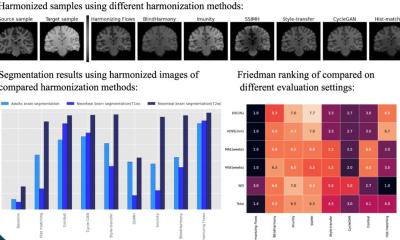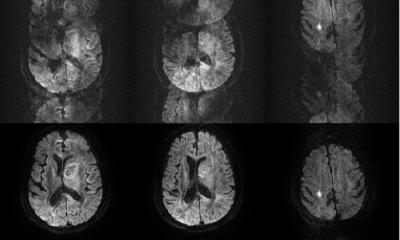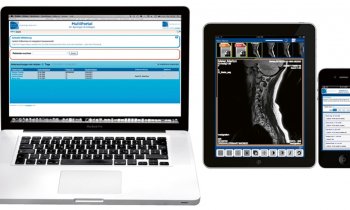To Image or Not?
Library of Evidence to aid imaging decisions, curb wasteful tests
Do a middle-aged man’s lightning-bolt headaches spell a garden-variety migraine, or do they call for a brain MRI to rule out more pernicious causes? Does a young woman’s recurring flank pain warrant a CT scan, or is she better off undergoing an ultrasound? To help practicing clinicians choose the most appropriate imaging test for each patient, Harvard Medical School is launching Library of Evidence, a publicly accessible digital repository of medical evidence.
Initially focused on imaging, the long-term goal of the library is to expand to other clinical dimensions that require evidence-based support tools such as laboratory testing and other medical procedures. “The overarching goals are to improve patient care and curb wasteful imaging by optimizing clinicians’ ability to choose the most appropriate imaging,” said David Osterbur, interim head librarian of Harvard’s Countway Library of Medicine and co-executive director of the Library of Evidence. “Doing so depends on clinical context, patient history and the latest, most robust scientific evidence.”
When it comes to choosing imaging tests, some scenarios are clear-cut, while other can be far more complex. “The use of objective reliable and high-quality medical evidence in clinical decision-making is the foundation of good patient care but incorporating it into daily practice is challenging,” said Ramin Khorasani, HMS professor of radiology and vice chair of the Department of Radiology at Brigham and Women’s Hospital. “The Library of Evidence is an important step toward organizing what is known to help advance the goal of evidence-based practice in a concrete way.
More than just a rich database, the Library of Evidence is a repository of clinical knowledge that can be embedded in real-time decision-support tools. The library is the product of meticulous review and scoring of scientific evidence, published research and professional organizations’ guidelines related to imaging.
The Library—which is free and accessible to clinicians worldwide—can be embedded into various clinical information systems used by individual practices and hospitals. Thus, when a clinician orders a test, the software program would query the Library of Evidence database and provide instant feedback on whether this is the most appropriate test for that particular scenario. For example, if a physician is ordering a CT scan for a patient with back pain, the system might prompt him to reconsider and suggest an ultrasound instead, citing evidence-based recommendations that explain why the latter may be a better option.
In an era of rushed appointments, physicians may become over-reliant on imaging. The Library of Evidence is designed to curb this practice by empowering clinicians with readily accessible medical evidence for each clinical scenario.
The most important benefit of evidence-based decision-making, the HMS team said, is improving the quality of care. “The idea is to not merely reduce unnecessary procedures and health care spending but also ensure that when a patient does need a test, they get the most appropriate option first,” said Ali Raja, HMS associate professor of emergency medicine, co-executive director of the Library of Evidence and vice chair of the Department of Emergency Medicine at Massachusetts General Hospital. “Ultimately it’s about improving patient care and healthcare outcomes.”
The launch of the Library of Evidence may be particularly timely for clinicians caring for Medicare and Medicaid patients. Federal legislation that will require clinicians to consult “appropriate use” criteria is slated to go into effect in 2018. Under that law, the federal government will reimburse practices for advanced imaging only if clinicians who order the tests consult approved, evidence-based “appropriate use” criteria through certified decision-support systems.
Incorporating evidence-based approaches to clinical medicine has topped the nation’s health care agenda for more than a decade, but the implementation of such practices has been inconsistent. The legislation is aimed at improving the adoption of evidence-based medical practices nationally.
Furthermore, the Library of Evidence is emblematic of the evolving role of medical libraries, Osterbur said. “In medical schools, we teach the value of evidence-based medicine, we encourage clinicians to practice evidence based-medicine, and now we, as librarians, can help evaluate this evidence and present it in a meaningful way.”
Source: Harvard Medical School
23.09.2016











